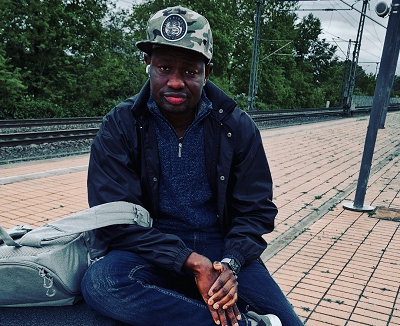Opinion/Entertainment
By: Ousainou Njie, a Germany-based Gambian
As a Gambian and music listener, call me a ‘Melo Man’ maybe. I have had the experience of listening to a lot of music from musicians from Africa and many other parts of the world not to mention ‘GamMusic’. I have been an Art Teacher for many years and have taught in many schools within Kombo eg. St. Therese’s, LK, Former Charles Jow, ABC etc and the West Coast: Presentation of Mary, Kunta Kinteh, Jamisa, Kabafita etc.
Thus, I have had many lessons with my students back in the day in which we had discussed issues regarding Gambian Music in relation to Performing Art, Tradition and Culture referencing of course to the Gambian culture. One of my student’s frequent questions then included “Why Gambian Music remained local”?
Therefore, the article is geared towards answering the above question by making reference in recollection of some of the answers I gave to my students back in the day and their thoughtful suggestions as well. GamMusic has been struggling and continues to struggle out of the corridors of the Senegambian region.
Here we go, the reasons for the above are numerous some of which solutions also appear to be out of reach due to economic reasons, population-related issues etc. Example, GamMusic has been struggling with ‘identity’ for so long. By identity, I mean to be identified as a musical genre, tune or rhythm that is particular to The Gambia like ‘Niger’ sound of Nigeria, Rumba of the Congolese, Reggae of Jamaica and Hip hop/RnB/Pop music of The United States. There is strong evidence that Rap Music originated in Africa, and I have no doubts of knowing the importance of praise-singing of the griots (Geuwel/Jallo) in the African culture and heritage. No wonder Senegal at one point was compared to USA in terms of Rap Music in Africa. If the most popular music in the world is pop, the best-selling Rap artists like Shawn Corey Carter (Jay-Z), Eminem, Drake and Kanye West are all US-based artists and Rap in English/slang or otherwise. So, one may wonder why there are better rappers in Senegal than in the Gambia eg. Dipdoundougis, Ahlou Brick, Fata and Ngaka to name a few. Despite The Gambia being an “English speaking”/former British colony. In my opinion, the reason for the above is the question of language. For any music to excel, firstly, it must be consumed by the people from whom it originated who can help push it outside to the wider world.
GamMusic is highly consumed in The Gambia though but there is still a problem of it reaching the outside world. This is because Gambian artists are limiting their scope within themselves a lot, competing more among themselves for local fan base instead of opting for genres and collabs with international artists in Africa and the wider world.
It’s high time for Gambian artists to look at what other international African artists are doing differently so that they too can learn from them. Lest I forget, coming back to why Senegal has better rappers even though The Gambia is a so-called British colony, Senegal rappers speak their mother tongue language (Wolof) better than Gambian rappers speak theirs. This might be subjective though but it’s a fact. Thus, Gambian rappers must improve on local language skills so as to put better reams on some hard-core rhythms or Rap-Mbalax which of course was born within the Senegambia region.
I have mentioned that GamMusic lacks identity because various artists have failed to adopt a particular musical genre/rhythm that will sound unique to the smiling Coast of Africa. If you can remember very well, there was the “Smiling Coast Rhythm” and also “Da Ladies Rhythm” (by Ghetto Boy Music) some twelve to fourteen years ago. These two rhythms were very typical of Gambian Music with absolute originality and could have been developed to get that ‘identity’ that GamMusic continues to lack today. The “Smiling Coast Rhythm” was a melodious dancehall genre and “Da Ladies Rhythm” was a unique mix of melodious mbalax-rap sounds both of which had compilations featuring several Gambian artists in those days eg Cess Ngom, Nova, Nancy Nance and several others. These genres or musical tunes were a great stepping stone to mount an imprint of a type of sound that was almost UNIQUE to The Gambia. But sadly, along the way for one reason or another, the Gambian artists discontinued the push that started to build that musical identity that would have probably today competed with the “Niger Sound” of Nigeria or the Rhumba of the Congos. That led again to the continuation of copying musical genres of Jamaica (Reggae) or putting lyrics on the “Niger/afro sounds” which are already identified with other countries.
Finally, to be more recent, Gambian music fans should not allow themselves to be dragged into fruitless arguments here and there because of pronouncements made by one artist or another. Beef or beefing is part of the music industry, but it should be on the basis of talent and skills manifestation for the betterment of the artist and the industry. For example, recently in Senegal, there was a beefing/clash between Ngaka Blendè and Ahlou Brick, but the artists took the battle to their YouTube channels. They would each drop videos within 24 hours to respond to one another in “CLASH”. These videos will gather a million views within 24 hours thus getting them royalty or pay from YouTube. That type of “Clash/Beef is what is more beneficial to the artist and their fans. The GamMusic fans must stop the cheap popularity they are availing to some artists making them a bit full of themselves as local champions and thus doing very little to push their music out of Cassamance and Guinea. If Gambian music remained as it is, it would continue to struggle forever because it has no direction at the moment due to a lack of “identity”.




